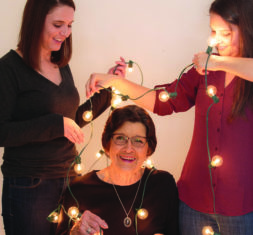Every year, tumbling off a ladder, tripping over a rock or fallen branch during a hike, and countless other activities send people sprawling to the ground — and thousands to the emergency room.
Falls can cause bruises and pain anywhere. But two of the most worrisome injury areas are the back and the head, says Neurosurgery One’s J. Adair Prall, MD.

Back injuries: In general, take ibuprofen and apply ice to a lower back injury. If pain doesn’t lessen after a few days, call your doctor. You should be seen sooner if:
- Pain is in the center of the back
- Pain or tingling radiates down arms or legs
Even when pain travels through arms and legs, it most likely will go away on its own. But to be safe, see your physician the next day or go to urgent care, Prall says.
Most pain eases in a few days. One notable exception: a bone that has fractured. Bones in the back and neck can fracture in patterns that are sometimes dangerous and sometimes not. In most cases involving a fracture, pain is immediate and typically worsens over several days, whereas muscle injury usually improves over several days, Prall says. So, if neck or back pain worsens during the days after a fall, rather than improving, see a doctor.
Head injuries: Anytime a fall results in a head injury, closely watch symptoms for several hours. Call your doctor, call Neurosurgery One’s concussion clinic, or go to the emergency room if a fall causes:
- Loss of consciousness
- Confusion
- Weakness, numbness
- Vision changes
Concussion treatment typically consists of physical and mental rest, but specialized therapy may be needed to avoid any long-term issues, particularly with cognitive skills. Neurosurgery One’s concussion clinic can assess any head trauma or suspected injuries and create a customized treatment plan.
Something More Serious
Sometimes, falls can result in more severe injuries.
Shirley Huntington learned that in 2014, when she went outside to change her Christmas-light timer, slipped, and fell. She hit her head and was knocked unconscious. She woke up bleeding, walked into the house, and called her daughter. “I said, ‘I think you should take me to the ER; I might need stitches.’”
She walked into Littleton Adventist Hospital, filled out paperwork, and answered questions. “Then, when they were wheeling me back to an exam room, I passed out.”

The fall had caused bleeding on her brain, and Prall operated immediately to stop the bleeding. After spending Christmas in intensive care, Huntington was on the road to regaining her strength and brain function and is still doing well years later.
However, she now uses a remote control Christmas-light timer and is more careful about where she walks. And she has a message for anyone who hits their head: Get checked out, fast.
Rebuilding With Rehabilitation
After brain-injured patients are treated medically, they typically require rehabilitation to get them back to normal activities, says Erasmus Morfe, DO, a physiatrist with Neurosurgery One.
For patients like Huntington, that rehabilitation is vital, Morfe says. “When somebody has a brain injury, it can be difficult to do things we take for granted.”
After Huntington’s surgery, her rehab team had her name farm animals. “I could only name about three. And I grew up on a farm.”
Rehab focuses on three areas:
- Physical — walking safely and maintaining balance
- Speech — improving cognition and making sure patients are swallowing properly
- Occupational — performing daily activities, such as dressing and grooming, and then progressing to more complex tasks
Neurosurgery One’s Concussion Clinic makes referrals to rehabilitation programs as part of its customized treatment plans.


